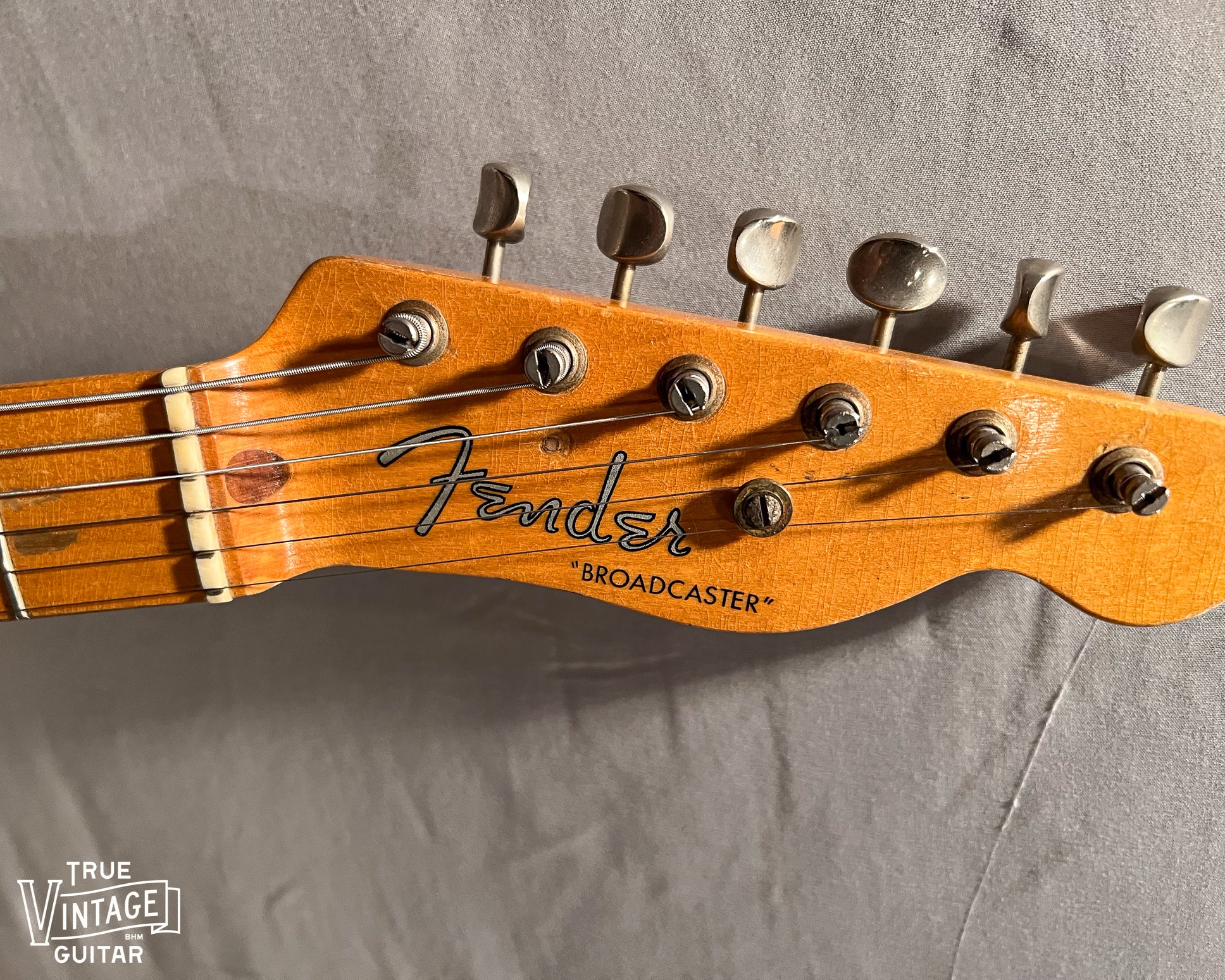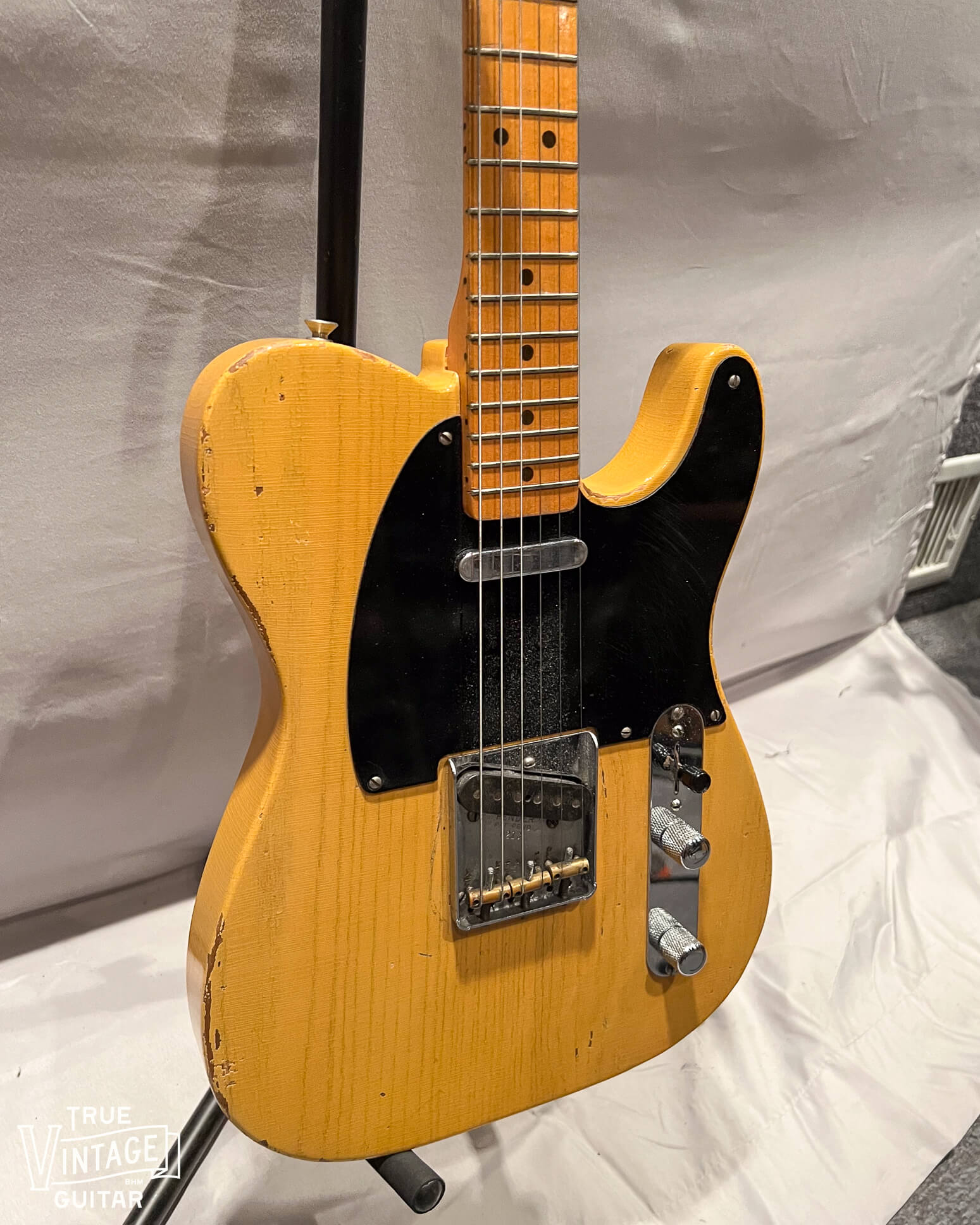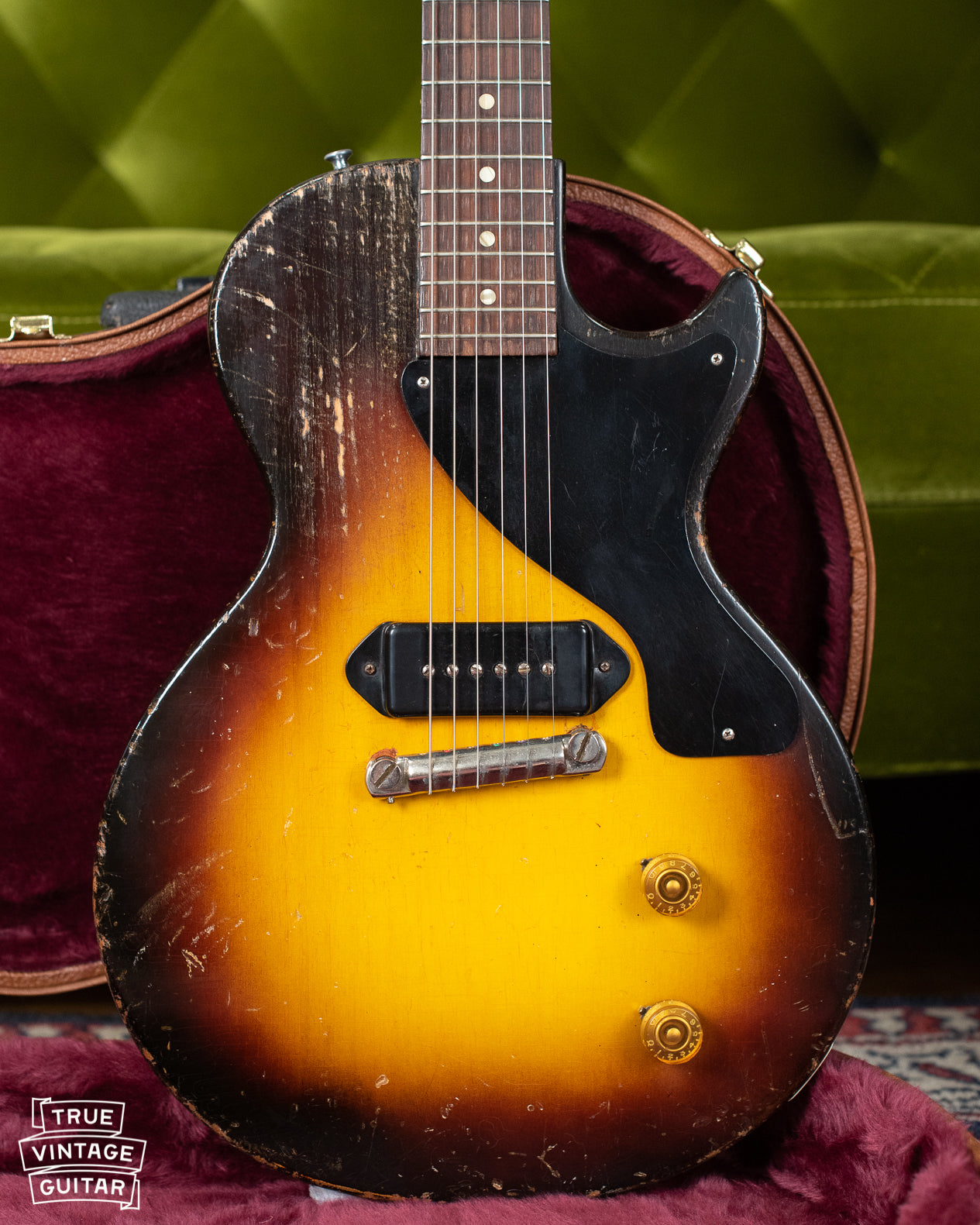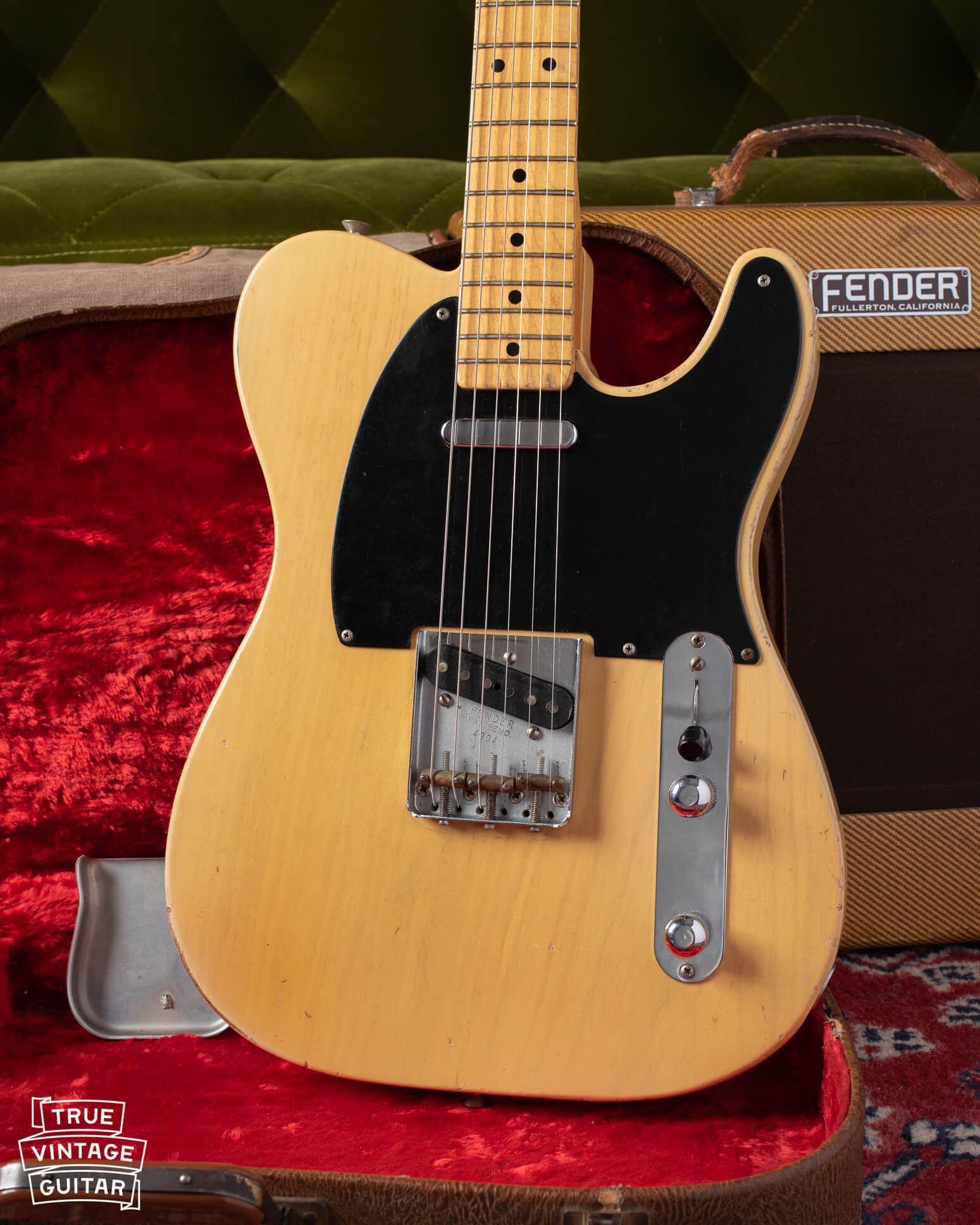Before the Telecaster model name, Fender's first solid body electric guitar made for Spanish style playing was known as the Broadcaster model from 1950 to early 1951. The Broadcaster had a black pickguard, two pickups, and a translucent yellow finish that Fender called Blond. It was not the first solid body electric guitar for Spanish style playing, but it was the first to mass produced and widely adopted by musicians. Leo Fender designed it to be a usable tool for the guitarist which was easily serviceable first and pleasing aesthetics came second.
As a Fender guitar player and collector, it's my goal to document the finest examples of vintage Fender guitars from the 1950s. If you have an early 1950s Broadcaster and are looking for assistance in identification then you can contact me below (red "Contact Me" button). I'm also looking to buy a Broadcaster or Telecaster from this time period, so if you're curious about its value or possible sale then you can contact me here: Sell a Fender.
What is a Fender Broadcaster?: The original Broadcaster is the early version of the Fender guitar model which was renamed the Telecaster in April of 1951.
Jump to the information you're looking for here:
How much is an original Broadcaster worth?
How to identify a Broadcaster
How many were made from 1950 to February 1951
History of the Broadcaster

How much is a 1950 Broadcaster worth?
An original 1950 Broadcaster is a very valuable guitar (especially to this author). The exact value of a vintage guitar can vary based on its condition and originality, so not all Broadcasters are worth the same. The Vintage Guitar Price Guitar 2023 estimates that the value of a 1950 Fender Broadcaster which is 100% original, in good condition, and includes its original case is worth in the vicinity of 1/4 of the average sale price for a home in the US in 2022 ($348k). This author thinks that might be a bit low, and would be willing to pay more than that for a Broadcaster in good condition.
You can contact me here if you're considering selling a 1950s Fender: Sell a Fender.
1950 Broadcaster Identification
|
Fender placed the serial numbers for Broadcaster guitars in the middle of the bridge plate which is screwed to the body. The serial numbers are typically four digits and usually start with "0". The guitar in the picture here has a serial number in the 02xx range which is a common range for Broadcasters. For more on serial numbers, check out Fender Serial Numbers. |

|
Broadcaster switch wiring: Early Fender switch wiring used an interesting circuit commonly referred to as the "blend" circuit. The blend circuit doesn't use a tone knob or capacitor like later guitars. The second knob is used to blend the neck pickup and bridge pickup together with the switch in the lead position. The forward position of the switch is the neck pickup with a low pass filtering capacitor to mimic a bass guitar (the Broadcaster pre-dates the standard production solid body bass). The middle position features the neck pickup alone but no tone knob.

How many Fender Broadcasters were made?
Unlike Gibson guitars, the production totals for Fender guitars have not been published. We do not have firm data to answer the question of exactly how many Fender Broadcasters were made, but we can make a good guess based on how many have been found and the number of possible serial number. Our best guess is that at least 200 Broadcaster guitars were made before the cease and desist letter sent by Gretsch to Fender. There is a collection of examples of original Broadcasters available here: Guitarlogs.com.

Broadcaster History
The history of the Broadcaster begins long before its debut in 1950. Leo Fender's "Fender Electric Instrument Company" officially began in 1946, but the former accountant turned engineer was experimenting with a solid body electric guitar for Spanish style playing back with his former business partner in 1944 (further reading: The Blackguard by Nacho Banos). Leo's company was becoming known for its fine lap steel guitars and accompanying amplifiers in the late 1940s, but I imagine that he kept hearing demand for a solid body electric guitar.
Solid body electric instruments could be amplified much louder than a hollowbody and not risk annoying feedback. Fender lap steel guitars could be loud, clear, and beautiful, but they couldn't be played like a typical acoustic archtop guitar with frets. Paul Bigsby, a local motorcycle builder and machinist, built a beautiful solid body electric guitar in 1948 for Merle Travis which must have made a splash in the local scene. Leo Fender was not in the habit of copying other manufacturers so he began prototyping what became known as the Broadcaster in 1949 (source: The Fender Telecaster by Andre Duchossoir).
"Broadcaster" wasn't the original name for the single cutaway, solid body electric guitar that Leo was developing. It was originally called the Esquire, but by the time the two pickup with truss rod version was in actual production in October of 1950, Leo thought that these two upgrades made it deserving of a new name. The Esquire name was carried on for the guitars without a neck pickup. Factory original two pickup Esquire guitars from mid 1950 exist and this author would love to buy one (Sell a Fender).
The standard production Broadcaster guitars were made from October 1950 until a cease and desist letter arrived on February 20th, 1951. The Fred Gretsch MFG Co was already making a drum kit with the model name "Broadkaster" and was requesting that Fender discontinue the use of the name. The general manager of Fender's distributor sent out a letter to all salesman the next day to tell them to discontinue the use of the name in reference to the dual pickup solid body electric guitar. Fender simply clipped the name "Broadcaster" off of all of the unused logos and continued making the guitar with no model name.



